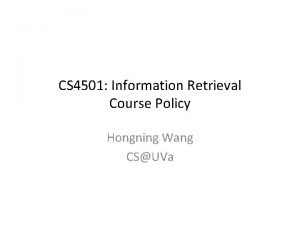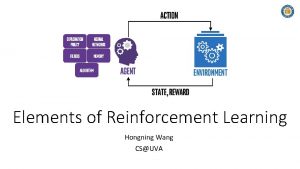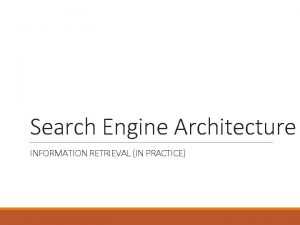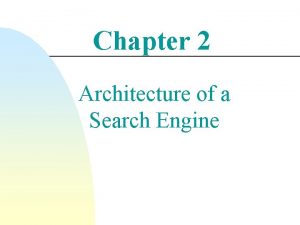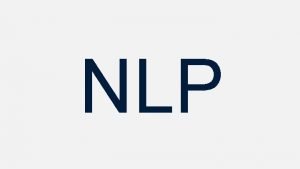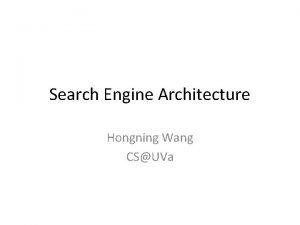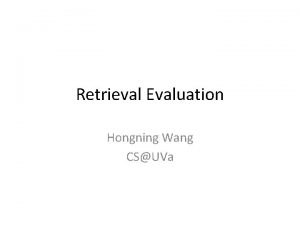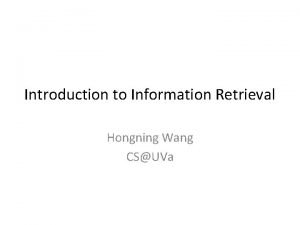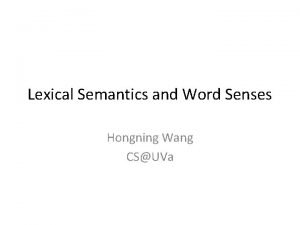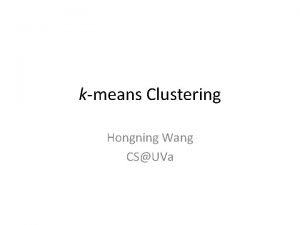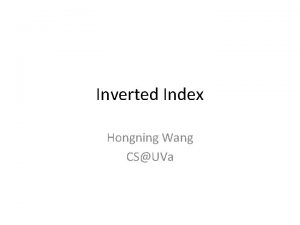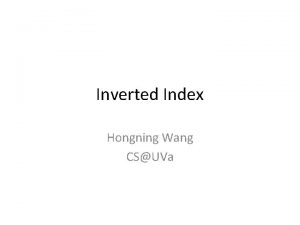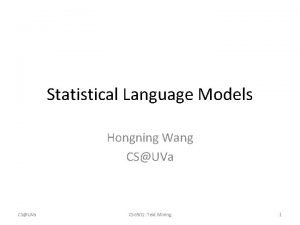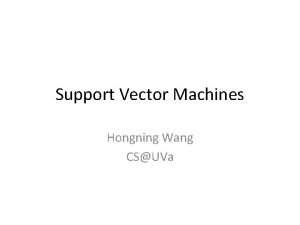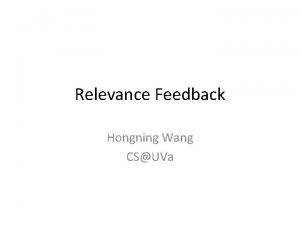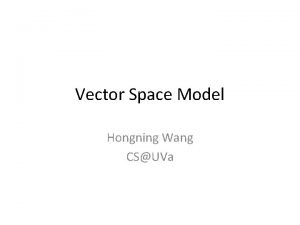Search Engine Architecture Hongning Wang CSUVa Classical search













- Slides: 13

Search Engine Architecture Hongning Wang CS@UVa

Classical search engine architecture • “The Anatomy of a Large-Scale Hypertextual Web Search Engine” - Sergey Brin and Lawrence Page, Computer networks and ISDN systems 30. 1 (1998): 107 -117. Crawler and indexer Citation count: 12197 (as of Aug 27, 2014) Query parser Ranking model CS@UVa CS 6501: Information Retrieval Document Analyzer 2

Result display User input Result postprocessing Query parser Ranking model Domain specific database Crawler & Indexer Document analyzer & auxiliary database CS@UVa CS 6501: Information Retrieval 3

Abstraction of search engine architecture Indexed corpus Crawler Ranking procedure Research attention Feedback Doc Analyzer Doc Representation Indexer CS@UVa (Query) Query Rep Index Ranker CS 6501: Information Retrieval Evaluation User results 4

Core IR concepts • Information need – “an individual or group's desire to locate and obtain information to satisfy a conscious or unconscious need” – wiki – An IR system is to satisfy users’ information need • Query – A designed representation of users’ information need – In natural language, or some managed form CS@UVa CS 6501: Information Retrieval 5

Core IR concepts • Document – A representation of information that potentially satisfies users’ information need – Text, image, video, audio, and etc. One sentence about IR - “rank documents by their relevance to • Relevance the information need” – Relatedness between documents and users’ information need – Multiple perspectives: topical, semantic, temporal, spatial, and etc. CS@UVa CS 6501: Information Retrieval 6

Key components in a search engine • Web crawler – A automatic program that systematically browses the web for the purpose of Web content indexing and updating • Document analyzer & indexer – Manage the crawled web content and provide efficient access of web documents CS@UVa CS 6501: Information Retrieval 7

Key components in a search engine • Query parser – Compile user-input keyword queries into managed system representation • Ranking model – Sort candidate documents according to it relevance to the given query • Result display – Present the retrieved results to users for satisfying their information need CS@UVa CS 6501: Information Retrieval 8

Key components in a search engine • Retrievaluation – Assess the quality of the return results • Relevance feedback – Propagate the quality judgment back to the system for search result refinement CS@UVa CS 6501: Information Retrieval 9

Key components in a search engine • Search query logs – Record users’ interaction history with search engine • User modeling – Understand users’ longitudinal information need – Assess users’ satisfaction towards search engine output CS@UVa CS 6501: Information Retrieval 10

Discussion: Browsing v. s. Querying • Browsing – what Yahoo did before – The system organizes information with structures, and a user navigates into relevant information by following a path enabled by the structures – Works well when the user wants to explore information or doesn’t know what keywords to use, or can’t conveniently enter a query (e. g. , with a smartphone) CS@UVa • Querying – what Google does – A user enters a (keyword) query, and the system returns a set of relevant documents – Works well when the user knows exactly what query to use for expressing her information need CS 6501: Information Retrieval 11

Pull vs. Push in Information Retrieval • Pull mode – with query – Users take initiative and “pull” relevant information out from a retrieval system – Works well when a user has an ad hoc information need CS@UVa • Push mode – without query – Systems take initiative and “push” relevant information to users – Works well when a user has a stable information need or the system has good knowledge about a user’s need CS 6501: Information Retrieval 12

What you should know • • Basic workflow and components in a IR system Core concepts in IR Browsing v. s. querying Pull v. s. push of information CS@UVa CS 6501: Information Retrieval 13
